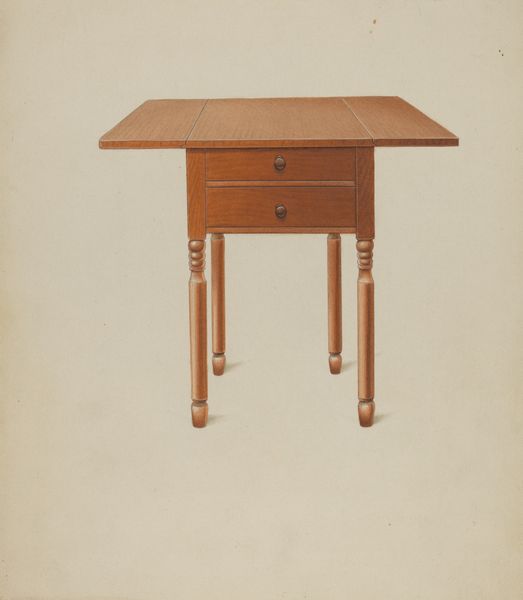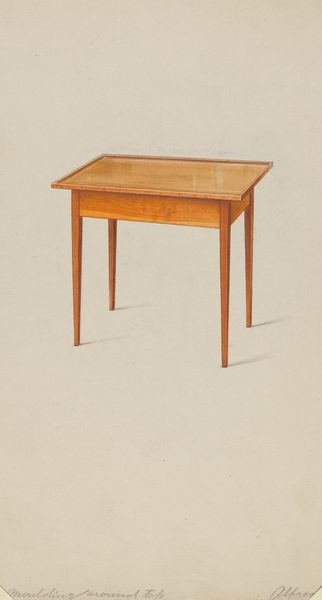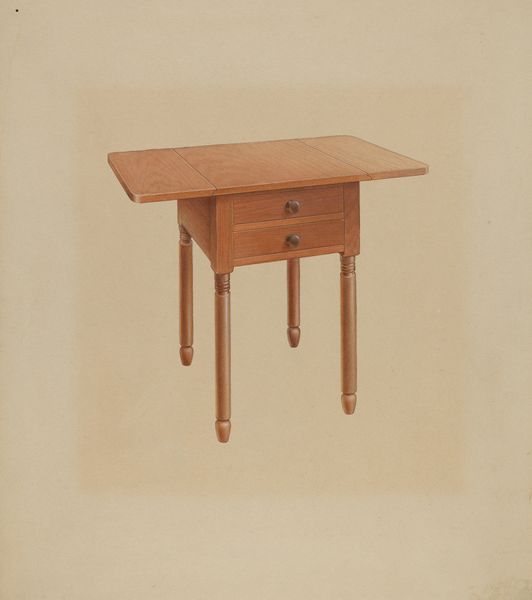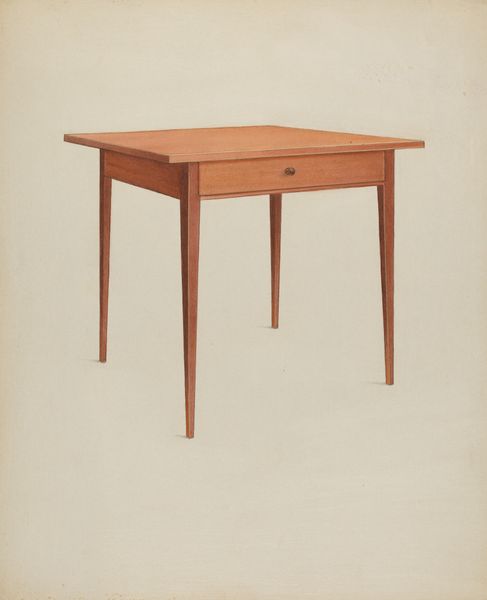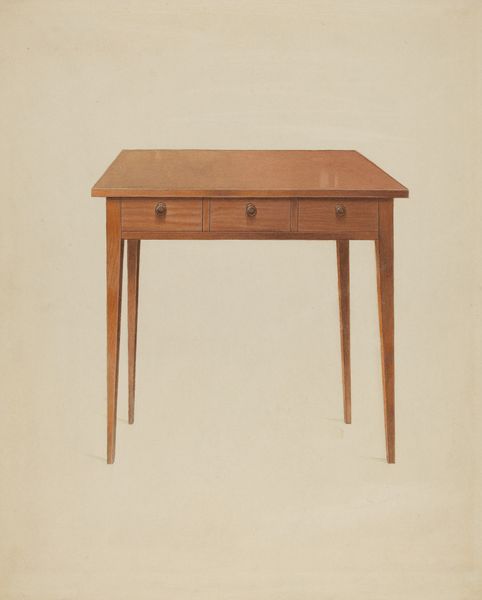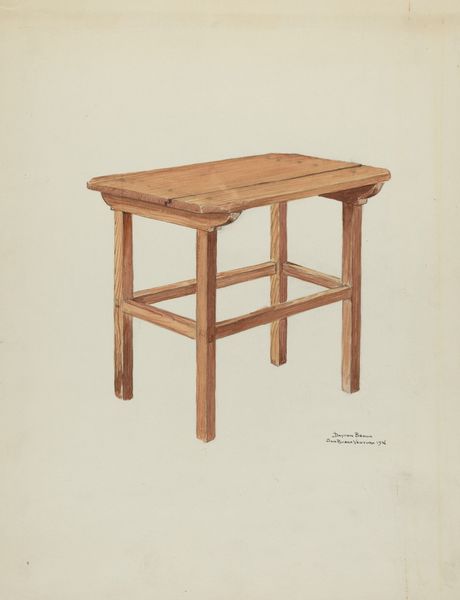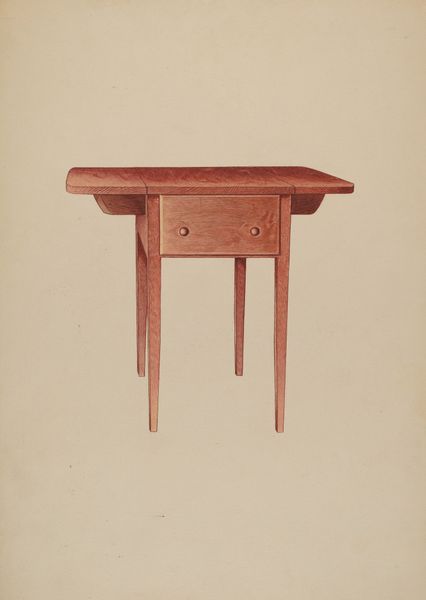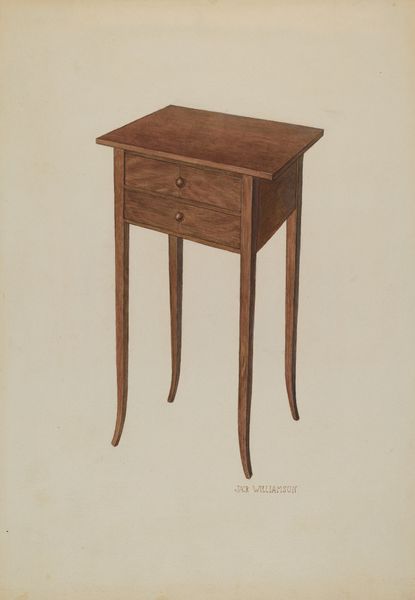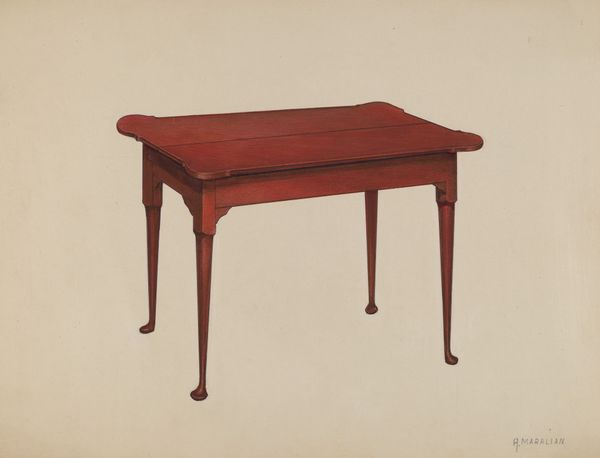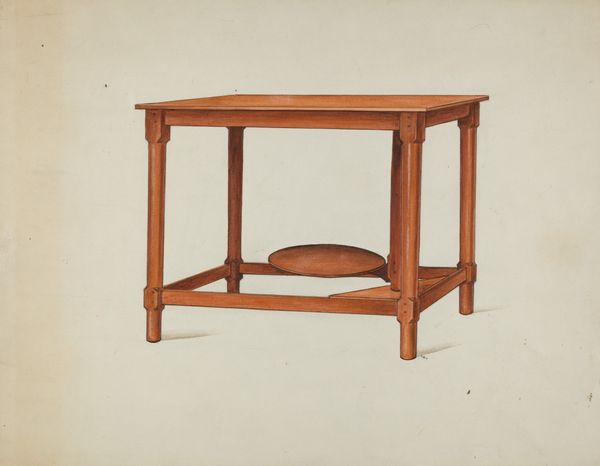
drawing, watercolor
#
drawing
#
watercolor
#
academic-art
#
watercolor
Dimensions: overall: 28 x 23 cm (11 x 9 1/16 in.) Original IAD Object: 26 1/2" high; 35 1/2" wide; 21" deep
Copyright: National Gallery of Art: CC0 1.0
Curator: Here we have Howard Weld’s “Shaker Low Table,” rendered circa 1936. It employs watercolor and drawing techniques to capture this piece of furniture. What are your first impressions? Editor: Serene, almost unnervingly so. The starkness of the composition is quite unsettling. It's as though the table is floating, divorced from any sense of context. A curious loneliness permeates it. Curator: That perceived isolation, I would argue, emphasizes the table’s structural elegance. The composition foregrounds the pure geometric forms: the rectangular tabletop, the cylindrical legs. The cool light further accentuates the formal clarity and essential characteristics. Editor: Yes, there's an undeniable elegance, but it feels clinical, lacking warmth. Perhaps Weld intended to document the object meticulously, foregoing any emotional resonance. What exactly defines Shaker design from your point of view? Curator: Shaker design, particularly in furniture, embodies principles of simplicity, utility, and honesty. Note how there's minimal ornamentation. The emphasis is on function and the inherent beauty of the materials themselves, with an incredible dedication to utility and balance in every component. Editor: So it's a celebration of pure functionality then, a visual austerity intended to encourage deeper consideration. Yet, I feel there's something poignant about immortalizing something as everyday as a table, even with this watercolor medium. It elevates it to almost ceremonial level, wouldn't you agree? Curator: Perhaps Weld saw inherent value, the unadorned geometry as something with spiritual dimensions. By documenting and extracting that object with drawing, and rendering that plain geometry using watercolors, he sought to highlight it. Editor: In some sense, Weld himself may be suggesting a type of quiet observation, by documenting this piece of furniture this beautifully using watercolors, as if imploring us to consider what is so essential about such understated craftsmanship. Curator: I concur. It's in these elemental shapes and planes that both a quiet usefulness and aesthetic purity reside, awaiting our attentive regard. Editor: Thank you. And next time, perhaps I’ll bring scones and brew Earl Grey so we can admire the image with some cozy ambience.
Comments
No comments
Be the first to comment and join the conversation on the ultimate creative platform.



